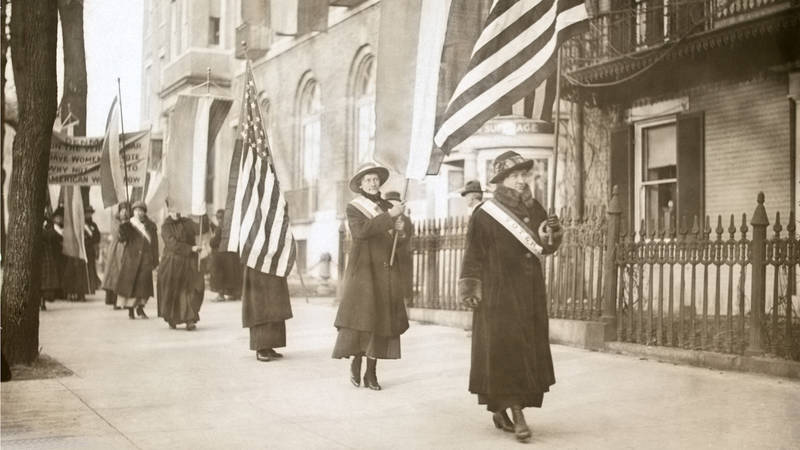The earliest known metalworking in North America began some 7,000 years ago, when Native Americans mined copper in hand-dug pits on an isolated peninsula in the Midwest. Remains of this massive deposit and the booming industry that grew around it are now part of a national historical park.
On a remote peninsula jutting into Lake Superior, rare veins of copper began forming more than a billion years ago in the area’s rock formations. Michigan’s Keweenaw Peninsula is home to one of the largest known lava flows on Earth, and in that basalt, Native Americans discovered and began digging pits to unearth the metal laced within it.
The copper in this region, which is part of the Upper Peninsula, is unusual because it formed as pure metal (also known as “native” metal), rather than ores — rocks and sediments from which smaller bits of copper must be extracted through more labor-intensive processes. The industries in nearly every other copper-mining region in the world extract ores, but on the Keweenaw Peninsula, people could take the metal directly from the ground and use it.
Starting around 7,000 years ago, Native Americans shaped the copper into tools, fishhooks, jewelry and other implements. It is the only known place in the U.S. where prehistoric people mined copper, and area tribes became famous for the distinctive items they created, which were widely traded. According to the National Park Service, archaeologists have found prehistoric artifacts made from Keweenaw copper throughout the continent.
It wasn’t until much later that people began to mine the region commercially — often at sites where Native American pits were located. A Michigan state geologist wrote about the region’s extensive copper deposits in 1841, and it triggered a rush of prospectors. In 1842, the federal government signed a treaty with the native Ojibwe people in which the tribe ceded its mineral rights on the peninsula in exchange for cash payments and supplies worth far less in value. Although it would take a few years for the industry to become profitable, and from the mid-1840s to the late 1880s, the Keweenaw Peninsula was the largest single producer of copper in the nation, and companies mined the copper for more than 100 years.
Michigan copper production peaked in 1916, when more than 16,000 workers extracted 267 million pounds of it. By then, the industry had consolidated, and two companies owned nearly all the operations on the Keweenaw Peninsula. Most of the mines closed during the Great Depression, then reopened during World War II, when increased military demand raised prices.
In the 1800s, copper was extracted with very simple tools, and workers would chisel into the rock by hand with drill bits and hammers. This dangerous work claimed lives almost daily. As the shallower deposits ran out, men — and boys — had to dig deeper and deeper to extract it, so even as technology improved, mortality rates remained high. Workers went on strike from 1913 to 1914 when the industry began replacing two-man drills with one-man drills, technology that required fewer workers and made the work even more dangerous. The strike lasted more than nine months, and workers ultimately lost and were forced to adopt the new technology.
The industry also took a serious toll on the environment. Piles of waste known as “poor rock” — rocks that were crushed and discarded after the copper was extracted — once clogged waterways and littered fields. The federal government established a Superfund site in 1986 to rehabilitate several lakes where companies dumped tailings, slag and chemicals directly into the waters. An estimated 200 million tons of mining waste polluted Torch Lake alone, and the fish there developed cancerous tumors. The site remains classified as an area of concern in the state.
Stay On Top of News
Our email newsletter shares the latest on parks.
Mining of native Michigan copper ceased in the late 1960s, after the industry had extracted about 10.5 billion pounds of the metal from the region and operations were no longer profitable. President George H. W. Bush signed legislation establishing Keweenaw National Historical Park in 1992 to preserve the area’s geology, mining history and culture.
The park has two main units, Calumet and the Quincy Mine. In the historic town of Calumet, people can explore detailed multimedia exhibits at the park’s visitor center and see historic buildings that speak to the character of the region and its multicultural residents. About 10 miles south in Hancock, visitors can tour the Quincy Mine, an industrial operation that produced copper from the 1840s to the 1940s and at one time was the deepest in the country with a shaft measuring more than 9,000 feet. Learn more on the Park Service website.
About the author
-
 Jennifer Errick Managing Editor of Online Communications
Jennifer Errick Managing Editor of Online CommunicationsJennifer co-produces NPCA's podcast, The Secret Lives of Parks, and writes and edits a wide variety of online content. She has won multiple awards for her audio storytelling.
-
General
-
- NPCA Region:
- Midwest
-
Issues


